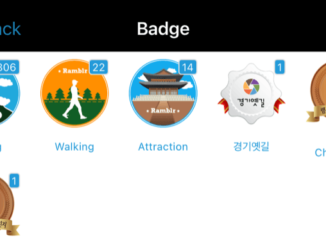
For each person the idea of fun or joy is different. And for many, we live in a world that appears to be obsessed with the concept that all experiences must be ‘equally’ fun or enjoyable, otherwise, they fall into the category of “not worth it”. When we develop games, game-like or gamified experiences, we must keep in mind at all times that joy and fun are subjective points of view that are unique to each individual.
We can, however, attribute certain aspects to what a majority of people do look for when they expect something to be fun, generally, it is the ability or opportunity for one or more of these:
- Personal expression
- Creativity
- Community
These also align with the tenets of Self-Determination theory from Deci and Flaste; autonomy, mastery and belonging. These are the base intrinsic motivators for most people and clearly what most people look for when wanting a game-like experience.
We can, therefore, surmise that, regardless of age, taking part in something game-like and in which you can find joy is and remains an important aspect of peoples lives. The game-like experience can be anything, a videogame, boardgame, sports, quiz-night, team building event, and so on…
The most crucial aspect of this is that taking in such game-like experiences is not down to age, gender, affluence or any other illusory barrier. What you found to be fun as a child may not be true now, interests change and that’s fine, you may find other things fun as an adult. The importance is that as you are now you take the time to find what it is you find fun. Knowing what you find fun and having fun is vital for your emotional and mental wellbeing.

What games and gamified experiences do, if they are well developed/executed, is to allow you to enter a state of flow, which in essence can be likened to a meditative state, as described by Csikszentmihalyi in his book Flow. Entering flow is a state of absolute engagement and increases your focus and lowers your overall stress levels.
For example, when I’m able to, I try to engage fully with the experience in front of me and try to place all other thoughts out of my mind. Voluntarily giving yourself over to a game or gamified experience is the first step, and often when you engage so fully you do disappear into the experience. This does happen fairly often for me when playing a weekly Dungeons & Dragons campaign with close friends.
Though it may not always be as easy to achieve as described above, when you do manage it you will likely feel refreshed afterwards, with a lower level of stress and a better state of mind.
Why do games make you feel good?
Rather than going into a deep scientific analysis of the various aspects, mechanics and elements of why games make us feel good from a psychological and neuroscience point of view, let’s instead go from a more subjective personal view.

We’ve likely, or hopefully, all played a game at some point in our lives. And hopefully, regardless of age, it is a happy memory. I would even hazard to say that you likely still enjoy playing games. Even those that for some reason state that they have grown out of games, probably still enjoy them. It may have transitioned from playing to watching, or another variation.
When we remember having played or partaken in a game or gamified experience, the memory that is brought forth is the entire-whole of the experience. We remember all the varying and different aspects of it, who we were with, friends, the drinks and food we had, the laughter, the epic moments that we had while playing. What this signifies is that each game or gamified experience brings a unique sense of fun in a myriad of ways to each individual.
To better understand and analyse the how and why these memories evoke a sense of fun and joy, you will need to consider these questions when exploring your own motivations and when developing motivational reasons for others to enjoy your creations:
- What types of games were you playing when you had the most fun?
- Who were you playing the game with?
- At what location did you play the game? What was the environment?
- What genre or theme did the game have?
These are very specific personal evaluations of your emotional and mental experiences with a game or game-like experience. Having a change occur in any of these can drastically alter how a player experiences and remembers a game. For the time being though, we have ignored any external stressors with these questions, as it will be very difficult for you to determine the mental state of someone you have never met entering and playing your game.
As you go through the above questions, you will slowly learn the reasons behind why something was enjoyable. And as you reflect on these reasons you can start to postulate how certain changes can increase or lessen the enjoyment of the experience. Understanding how small variations can affect you and your players is a valuable insight to have as a designer and developer.
Expectations and ideas of fun

Humans by nature are communal beings, we enjoy sharing our experiences with others. This is why games and game-like experiences are such great conduits for sharing the experience with multiple individuals at once, be they friends or complete strangers.
One danger of the communal aspect of gaming though is the formation of expectations around the game experience. These expectations foment within ourselves and within others and take on a multi-tiered understanding as they develop. Thus, when I speak of expectations, I’m referring to the following variations:
- What you expect from the game itself
- What others expect from the game
- Expectations of the group/collective
- Expectations of each other in a group/collective
- And the expectation of others outside of the game around you and vice versa
The first two have to do with states of mental conditioning and the anticipation of the game or gamified experience. Will the experience meet our own or other’s expectations? Have we set our hopes too high or low? These are personal aspects and unfortunately can only be dealt with through preparation and self-reflection.
The third and fourth points are about communication with others, is everyone on the same page with what they expect and hope to gain from the experience, this is an exercise in ensuring that no-one is left behind. As is usual with small groups, if there is a person enjoying it less than others, then this can slowly influence everyone’s mood.
The final one is likely the most difficult and is in itself multi-tiered again. Many people will develop their own expectation of you when they discover that you play games or develop gamified experiences. These can be positive or negative and they can influence your mindset towards what you and your enjoyment of the experience is. The reverse is your expectations when you see others enjoying an experience, and whether you agree with it or whether you create a concept in your mind and try to live up to it or accept what you have.
In the end, reflecting back on your own motivations, what the motivations are of your audience/players and how you incorporate these into your game or gamified experience is up to you. But be aware not to take on or dwell too deeply on all the expectations of other’s, this can lead you down a rabbit hole that may slowly drain you and what you create. In other words, analysis-paralysis.
Solving the fun
Once you have done a fair bit of analysis of yourself, your expectations, those of others, and what about the experience is enjoyable, then you can start the hard work. This involves determining the pain points that cause issues and problems and that lessen the enjoyment and engagement for your players in your experience. Remember that transparency and communication are key for this, start involving others, playtest your experience. Move beyond the self-reflection stage and start discussing with others and exploring their viewpoints.
As you discuss with others your perspective, expectations and eventually the way you experience or have developed the experience will change, and this change will not be easy to go through and/or accept. You may even come up across the fact that everything you have done to this point is why the experience wasn’t enjoyable, and that’s perfectly fine! Throw away everything that didn’t work, start iterating and refining. What you must remember is that you do not need to attain perfection, but rather something that is engaging for your specific, chosen audience.
And sometimes you may just need to take a step back and take a break. Occasionally being able to gain perspective while not pushing yourself is the best way to figure out how to solve the fun of your experience.
Final thoughts
Playing and/or creating games and gamified experiences are surprisingly deeply personal experiences because if we intend for ourselves to enjoy it or for others to enjoy it, we need to place our emotions into it. We need to take on the points of view of other’s, we need to examine our own views and those outside of our own. And from there determine our own definition of joy and engagement.

The word joy or fun though is thrown around too much nowadays, everything needs to be fun or enjoyable, otherwise, it’s not worth it. Unfortunately, each person’s view of fun is different and labelling experiences with a standardised view can be dangerous. Creating a homogenous view of fun and joy is one that starts moving into extremes and the realms of fantasy and the unattainable. We need to throttle back our own expectations to what we view as realistic fun and not what the commercial world has conditioned us to expect.
Therefore, we need to take a moment to reflect properly on what we consider to be the core of our own enjoyment and what constitutes fun. And as long as we communicate with those that we share it with or deliver an experience to, then we have an improved likelihood of success of creating something that will engage those that we wish to engage.
And just remember that sometimes something as simple as fun can be found in the smallest of activities, like playing a quiet game of Mario-Kart or a card game with those special to you.
References:
Brown, S. (2010). Play – How It Shapes the Brain, Opens the Imagination, and Invigorates the Soul. New York: Avery, The Penguin Group.
Csikszentmihalyi, M. (2002). Flow – The classic work on how to achieve happiness. USA: Rider.
Deci, E. and Flaste, R. (1995). Why we do what we do – understanding self-motivation. USA: Penguin Books.
Huizinga, J. (1950). Homo Ludens – A Study of the Play-Element in Culture. New York: Roy Publishers.
Schell, J. (2014). The Art of Game Design: A book of lenses. CRC Press.
Griffin, D. and van der Meer, A. (2019) Press Start – Using Gamification to Power-up Your Marketing. London: Bloomsbury.
- Joy in gaming & gamified experiences - 11th March 2020





Be the first to comment